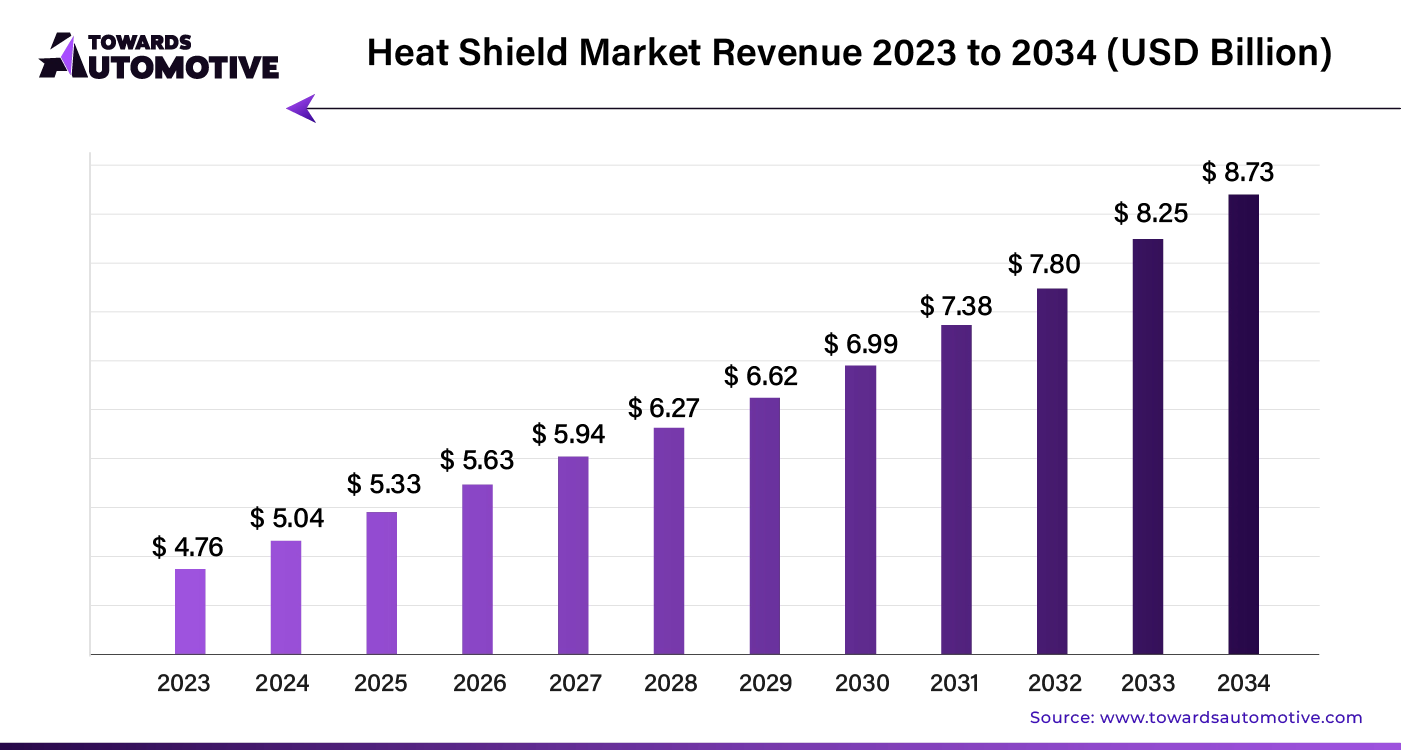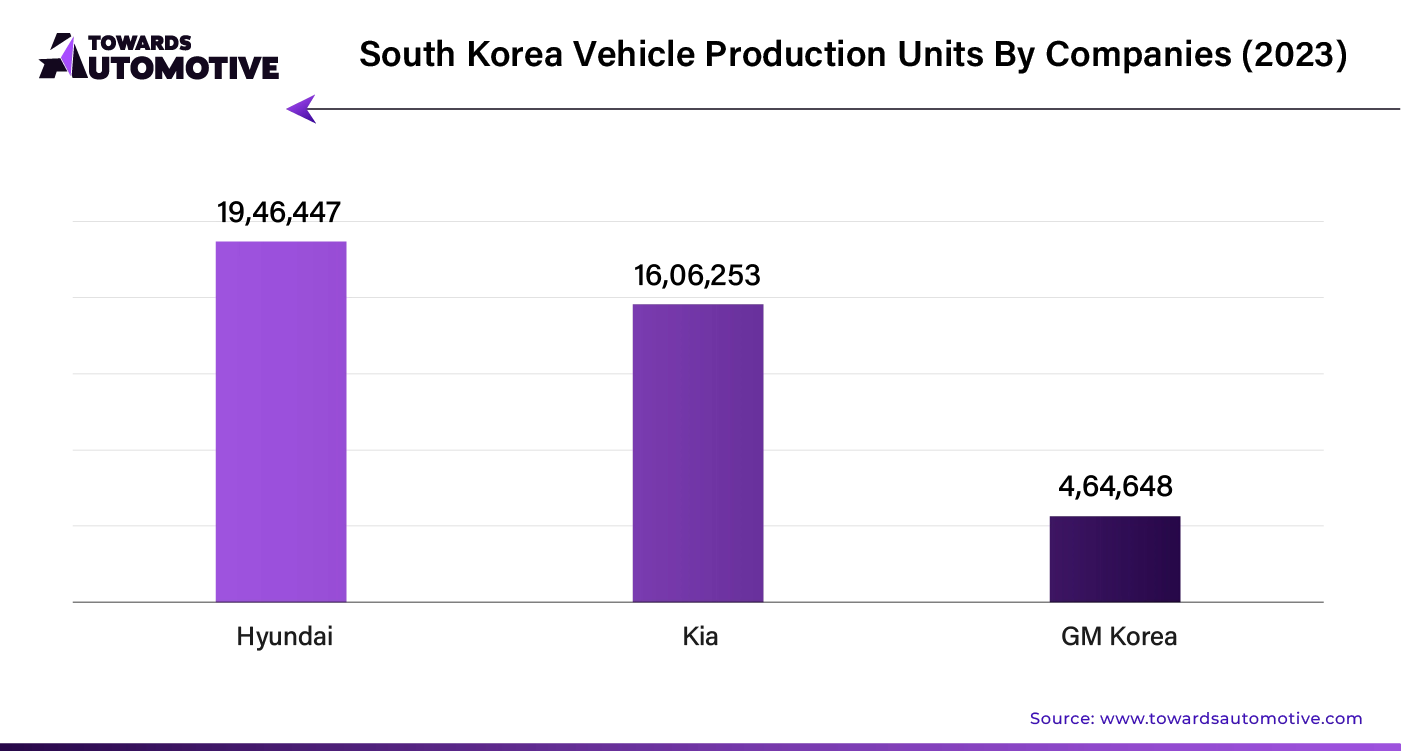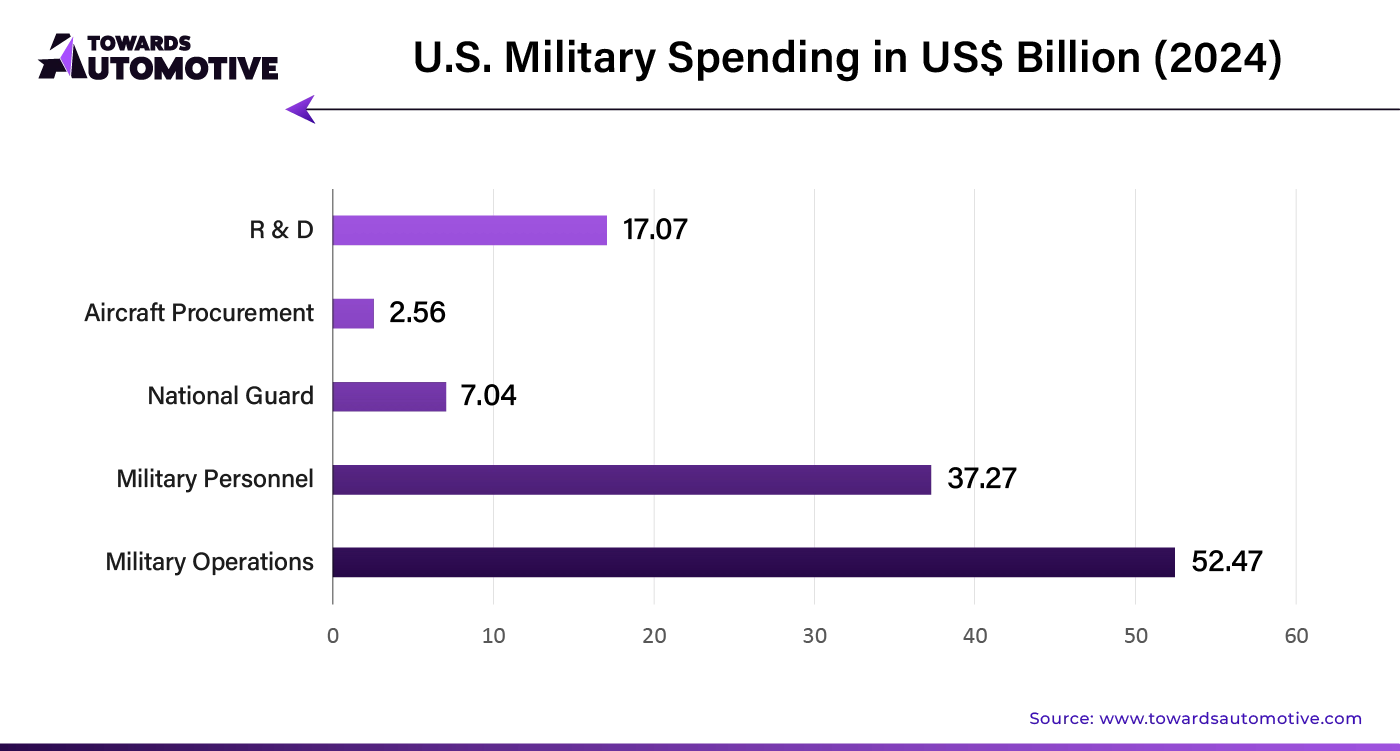January 2025
The global heat shield market size is calculated at USD 5.04 billion in 2024 and is expected to be worth USD 8.73 billion by 2034, expanding at a CAGR of 5.93% from 2023 to 2034.

Unlock Infinite Advantages: Subscribe to Annual Membership
The global heat shield market is expanding due to the increasing number of space missions and satellites. Traditionally dominated by space-focused countries like the United States and Russia, this market is now seeing growth in emerging nations such as India and the United Arab Emirates.
In the automobile industry, the demand for heat shields is rising as car production scales up. Heat shields are crucial for enhancing engine performance by preventing hot air from entering, which is a key concern for auto manufacturers.
Additionally, the surge in air travel is driving aircraft production and, consequently, the use of heat shields in the aviation sector. The automotive market valued at USD 4,070.19 billion in 2023, is experiencing growth and is projected to surpass USD 6,678.28 billion by 2032, with a significant CAGR of over 5.66%.
Artificial Intelligence (AI) is poised to transform the heat shield market by driving significant growth and innovation. AI enhances product development through advanced simulations and predictive modeling. By leveraging AI algorithms, companies can design more efficient and durable heat shields, reducing the need for extensive physical testing. This accelerates the development cycle and lowers costs.
AI also optimizes manufacturing processes by streamlining production and improving quality control. Machine learning models predict potential failures and maintenance needs, ensuring reliability and extending the lifespan of heat shields. Furthermore, AI enables real-time data analysis, which helps in monitoring performance and making informed adjustments during operation.
In addition, AI-driven analytics provide valuable market insights, guiding strategic decisions and identifying emerging trends. This allows companies to tailor their offerings to meet specific industry demands and stay ahead of competitors.
Overall, AI integration in the heat shield market enhances efficiency, reduces costs, and accelerates innovation, driving market growth and establishing new standards for performance and reliability.
In the heat shield market, the supply chain is crucial for ensuring efficient production and distribution. The process begins with raw material suppliers, who provide essential materials like ceramic fibers and metal alloys. These materials are then transported to manufacturers, where they are processed into heat shield components. Manufacturers must closely coordinate with suppliers to maintain a steady flow of materials and avoid production delays.
Once produced, heat shield components are shipped to assembly facilities where they are integrated into various products, such as aerospace and automotive components. Effective logistics management ensures timely delivery to these facilities, minimizing downtime and reducing costs.
The distribution phase involves delivering the finished products to end-users or retailers. Efficient warehousing and transportation strategies are essential to meet market demand and ensure quick delivery. Additionally, maintaining robust relationships with distribution partners helps in managing inventory levels and addressing any supply chain disruptions promptly.
Overall, a well-coordinated supply chain in the heat shield market enhances operational efficiency, reduces costs, and ensures that products reach the market on time.
The heat shield market is shaped by several key components and contributors. These components include materials like ceramics, metals, and composites, which are essential for creating effective heat shields. Companies like 3M and Saint-Gobain offer advanced ceramic materials that provide superior thermal protection. Their innovations enhance the durability and performance of heat shields in high-temperature environments.
Metal-based heat shields, supplied by companies such as Castrol and Alcoa, offer excellent thermal conductivity and resistance. These materials are crucial for applications in aerospace and automotive industries where extreme temperatures are a concern.
Composite materials, produced by firms like Hexcel and Toray Industries, combine strength and lightweight properties, making them ideal for both commercial and military applications. Their contributions help improve fuel efficiency and safety in vehicles.
Additionally, firms like NASA and Boeing push the envelope in heat shield technology, developing advanced solutions for space exploration. Their research and development efforts drive innovation and set new standards in the market.
Together, these companies and materials create a robust heat shield ecosystem, addressing the diverse needs of industries that rely on high-performance thermal protection.
Metallic heat shields remain dominant in the market, with their growth anticipated at a CAGR of 5.7% from 2024 to 2034. Their continued preference is due to their proven durability and high heat resistance, even as non-metallic alternatives gain traction.
In the automotive industry, the use of heat shields is expected to grow at a CAGR of 5.5% during the same period. This increase is driven by higher automobile production rates, spurred by urban population growth and government incentives. As car manufacturers focus on enhancing engine efficiency, the demand for heat shields continues to rise.
United Kingdom: 6.3% CAGR
In the United Kingdom, the heat shield market is expected to grow at a CAGR of 6.3% through 2034. This growth is driven by increasing aircraft manufacturing, spurred by advancements in aircraft technology. Additionally, government initiatives to enhance worker safety are boosting the demand for heat shields in factory settings.
China: 7.1% CAGR
China's heat shield market is projected to grow at a CAGR of 7.1%. The country's industrial boom is a major factor, with heat shields increasingly used in automobiles, aircraft, and industrial equipment. Local production of heat shields is thriving due to strong domestic demand for locally-made industrial products.
Japan: 6.7% CAGR
Japan is experiencing a 6.7% CAGR in its heat shield market. The growth is fueled by the expanding automobile industry and a shift towards automation. The increased production of automotive heat shields is supporting the market's progress.
South Korea: 7.4% CAGR

In South Korea, the heat shield market is set to grow at a CAGR of 7.4%. The nation's passion for premium cars is driving higher demand for heat shields. Additionally, the use of advanced materials like aluminum and gold in heat shields is contributing to market growth.
United States: 6.3% CAGR
The U.S. market for heat shields is expected to grow at a CAGR of 6.3%. The rise in military spending and NASA’s space exploration efforts are key factors. Heat shields are increasingly used in military equipment and spacecraft, supporting the market's expansion.

The heat shield market is predominantly led by a few major players, though smaller and medium-sized companies also have opportunities to succeed. Geographical expansion is a key strategy, driven by the growing needs of the automotive and aerospace industries. Another important strategy is the development of advanced heat shield technologies.
Recent Developments
By Type
By Application
By Region
January 2025
January 2025
January 2025
September 2024
Dr. Arjun Patel is a distinguished expert in the automotive industry, holding advanced degrees in Automotive Engineering and Mechanical Engineering. His expertise spans automotive market dynamics, technological advancements, and sustainable practices. Dr. Patel excels in conducting in depth research and analysis on market trends, consumer preferences, and the economic implications within the automotive sector. He is renowned for his insightful publications on topics such as electric vehicles, autonomous driving technologies, and the evolution of sustainable transportation solutions. Dr. Patels research contributions have significantly advanced understanding in the field, earning him recognition as a leading authority in automotive research and analysis.
We offer automotive expertise for market projections and customizable research, adaptable to diverse strategic approaches.
Contact Us